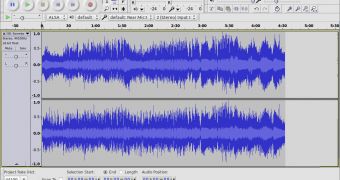Audacity, a tool that can be used to record live audio through a microphone or mixer, or digitize recordings from cassette tapes, records, or minidiscs, is now at version 2.0.3.
Audacity 2.0.3 comes with a ton of features and can record from microphone, line input, USB/Firewire devices, and others. It can also manage multiple input and output devices, dub over existing tracks to create multi-track recordings, record at sample rates up to 192,000 Hz (subject to appropriate hardware), and record multiple channels at once.
The editing part of Audacity features easy access to functions such as Cut, Copy, Paste and Delete, unlimited sequential Undo (and Redo) to go back any number of steps, a draw tool to alter individual sample points, and much more.
Highlights of Audacity 2.0.3:
• The SoX Resampler library (libsoxr) has replaced libresample in Audacity releases, offering both higher quality and greater speed; • "Set Range" now changes only the range of the Time Track, preserving the pitch/speed set by any existing warp points; • A vertical scale was added with options for linear and logarithmic display and interpolation; • Warp points saved in a 2.0.3 project will be preserved if opened in previous versions but playback and display will be incorrect; • Adjustable Fade (accessible effect for creating partial fades and adjustable fade shapes); • Studio Fade Out has been added (uses a filtered "S" curve); • Real sample rates up to 384000 Hz are now supported for playback and recording in high-resolution devices (the maximum is up to 192000 Hz for Windows DirectSound host); • Export Multiple didn't prevent export if there was no audio or all audio was muted. This allowed export of small invalid files; • CMake is now required in order to build libsoxr.
A complete list of changes, updates and new features can be found in the official announcement. Download Audacity 2.0.3 right now from Softpedia.

 14 DAY TRIAL //
14 DAY TRIAL //